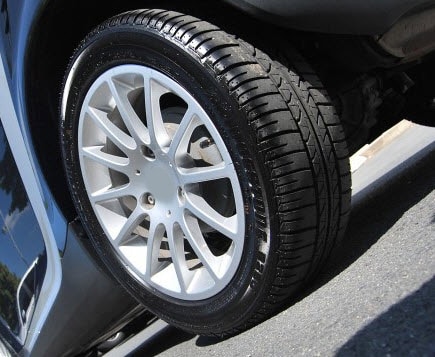
Customers frequently ask us about the benefits of using nitrogen in tires, as opposed to compressed air which is made up of nitrogen, oxygen and a small amount of water vapor. There are three primary benefits that come along with using 100-percent nitrogen over the compressed air mixture and we recommend it if you want to extend the life of your tires. Read below to find out the top three benefits of using nitrogen in tires.
Reduces Tire Pressure Loss
Because nitrogen is made up of larger molecules than oxygen, it doesn’t leak through tire walls as easily as compressed air. This results in more consistent tire pressure and a lower chance of you driving around on underinflated tires, which increase the chance of being involved in a car accident by a significant margin. While pressure gauges are available, many drivers still forget to check their tire pressure regularly, so filling tires with nitrogen is a good alternative if you don’t want to have to worry about it.
Won’t Support Moisture in Tires
The compressed air you fill your tires with at gas stations often has moisture build up in it. When it warms up outside, and when tires heat up as your driving, that water converts to gas and expands. This increases tire pressure momentarily. While overinflated tires aren’t quite as dangerous as underinflated tires, they’re still more likely to blow out than a properly inflated tire. Nitrogen is a dry gas, so you won’t have to worry about this problem if you fill your tires with it.
Improves Fuel Economy
If you want to achieve optimal efficiency, nitrogen can help because its molecules are less prone to bleed out of your tires’ walls, as already mentioned above. Underinflation causes a slight reduction in fuel economy, so having more consistent tire pressure, which nitrogen provides, will ensure that you get maximum mpg.